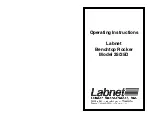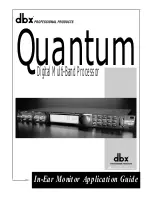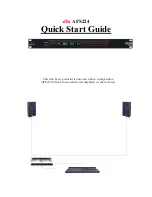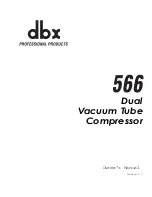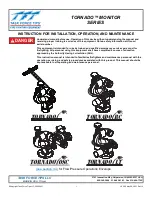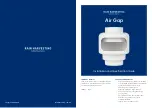
- 21 -
triangular sign for low-speed vehicles should be uninstalled from the ridger and
placed in a dry room, to be protected from being damaged.
5.4. Working parts exchange
In the ridger there can happen necessity of exchange of ridges, duckfoot shares,
ploughshares or wings of the ridger. In order to exchange working elements, the ridger
suspended on the tractor shall be raised into the transportation position. The assembly
shall be secured against falling by putting a strong support excluding its falling over under
the tool frame. After setting the support, lower the ridger until it is leant on it, stop the
tractor engine, remove the key from the ignition switch, pull the handbrake, and secure
one of the rear wheels of the tractor with wedges against moving. Before exchange of the
working elements, stability of the assembly: tractor
– ridger shall be checked.
CAUTION
All activities connected with uninstalling and installing of worn parts of the ridger shall
be performed on the tough flat ground, after lowering the ridger onto the ground or
supports.
Exchange of a ridge or a duckfoot share
-
Ridger frame should be set upwards on the support,
-
Twist off the bolt fastening caps of working elements in rails,
-
Slide out caps of worn elements of the ridger,
-
Insert the caps of new working element into the rails,
-
tighten the bolt fastening caps of working elements of the ridger.
Exchange of ploughshares and wings of the ridger
The ridger ploughshare shall be exchanged after the ridger body is previously uninstalled
from the working unit. After uninstalling the ridger, it shall be put in a vice and the bolt
fastening the double-sided ploughshare (item 18
– table 2, parts catalogue) shall be
untwisted. After putting a new or regenerated ploughshare, the fastening bolt shall be
tightened and the ridger cap shall be installed in the unit rail.
CAUTION
When exchanging working elements, proper tools and protective gloves shall be
used.
5.5. Detection and removal of failure
During operation, following failure can occur, which can affect unfavourably the ridger
operation quality, raise the application cost and also lead to damage both of the ridger and
the tractor.
Table 2. Table of inefficiency reasons and methods of removal
Inefficiency
Reason
Method of removal
Tractor front tends to rise upwards
Too little load on the front.
IMPORTANT:
Tractor front axle load
cannot be less than 0.2 of the
tractor’s weight.
Check if the tractor class is consistent with
the manual recommendations. If not
–
change the tractor. If so
– check and if
need be add the proper number of front
axle ballasts.
Ridger will not submerge
Damaged
or
worn
ridges
or
ploughshares of the ridger
Check and exchange
Support wheels lowered too low
Check and adjust the operation depth
Improper longitudinal leveling
Check and level the ridger
Uneven working depth
Improper longitudinal or transversal
leveling
Check and perform proper adjustment
Transverse swinging of the ridger
Improperly
adjusted
side
rods
turnbuckles
Check and perform adjustment
























